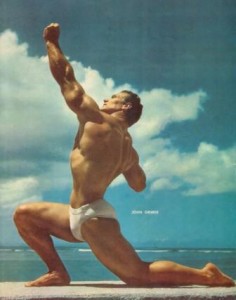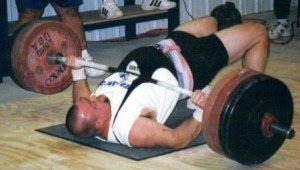First All-Round Meet Memories
by Thom Van Vleck
My first All-Round meet was when I traveled with my Uncle Wayne Jackson to the old Missouri State Penitentiary in Jefferson City. It was called “The Wall” because a very imposing stone wall surrounded the facility almost looking like that was all that was there. It was, I thought 1979, but my Uncle said he thought it was ’80.
I was 15 or 16 at the time and we arrived in time to meet up with Bill Clark. After some greetings we headed inside. I considered myself a pretty tough kid, but I’ll be honest, being inside that place was like being “scared straight”. We went through a double cell door system and we had the backs for our hands marked with ultraviolent ink. The mark had to be there or you didn’t get back out later! A funny note, after the meet, some of the guys that were showering held their hand out of the shower for fear they would wash it off even though it was “permenant ink”. I was afraid to shower at all!
As we filtered into the yard we were escorted by a guard. I noted that he didn’t have a gun or weapon of any kind and when I asked why he said, “The prisoners would just jump me and take it away”. It was then I realized this was the real deal! This was the days before signing waivers….you were just warned and there you go!
A group of the lifting prisoners greeted us. I recall Lou Greenlaw being one of them. He noticed me being a little nervous and he said to stick close to him, anyone that went after me would have to go through him first. Lou was a big guy and I recall him doing a very strict 315lb Good Morning that meet for a record. He was pretty nice to me all day and encouraged me. I wondered later what he was in there for!
After awhile, I came to realize that all the prisoners were pretty nice. Most of them were men that had made bad choices, but weren’t necessarily evil men. At one point I recall the prison cross dressers coming in to watch the lifting. They got kinda rowdy at one point making cat calls at the guys lifting….and they were kicked out as I recall. I thought it was pretty funny, and being a farm kid….I’d never seen anything like those guys before!
We ate lunch in the cafeteria. It was a loud and busy place. The food was like school food, not bad, but not that great. There were a lot of the general population in there and they were pretty rough looking. I sat with Lou!
My Uncle Wayne had a great day. I recall him breaking about a dozen records. The one that stuck out in my mind the most was a 300lb Reverse Grip Clean and press. He did 250 with ease and went to 300. He got it but Bill turned it down. I can’t recall why, but it looked good to me! Wayne had been recovering from a devastating back injury so his lifts were all the more impressive to me. He did an easy 280lbs seated press. Wayne had done 300lbs for 8 sets of 2 at one point in training, but he braced his feet behind him while the rules of the lift required him to have his feet flat which really threw him off. I also recall him power cleaning and pressing 300lbs with power to spare. Wayne was always an explosive presser and it always made him look like he had plenty more in the tank.
I recall doing a 120lb seated press weighing about 165lbs and then deadlifting something like 365lbs. I don’t think they counted it with the other lifts, but at least I got on the platform for the first time in my life.
That prison was legendary, some pretty bad people (like Lee Harvey Oswald) were sentenced there and many of them died there, either by natural causes or otherwise! But all in all, the men I met that day were pretty good guys. Bill used to do a lot for the prisoners with his lifting events and I’m sure it helped put more than one of the straight and narrow. Prison lifting is a thing of the past as many of states have limited this for lots of reasons which are debateable. But that day stands out to me. A kid learned more than just how to lift in a meet that day. He learned a lot about life.

